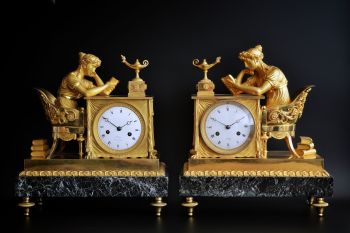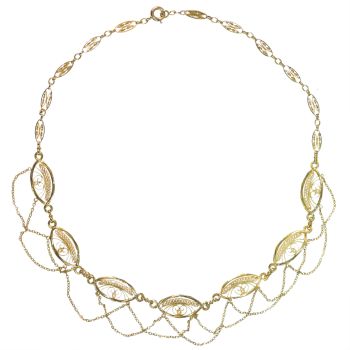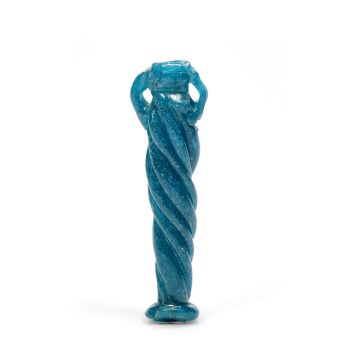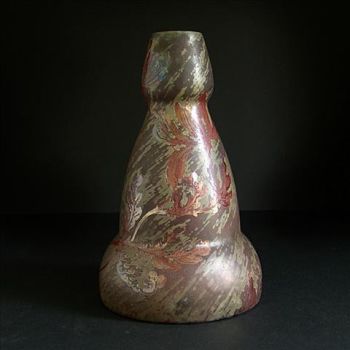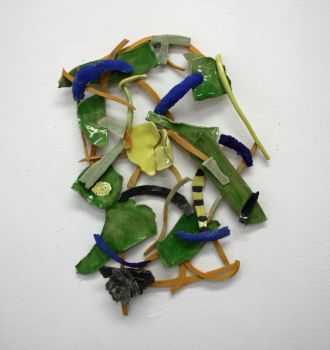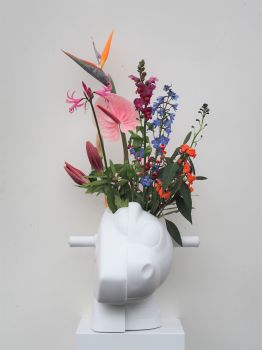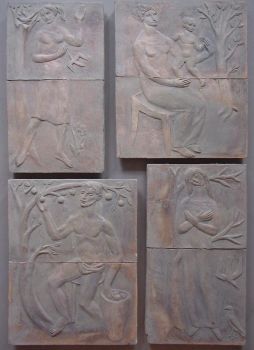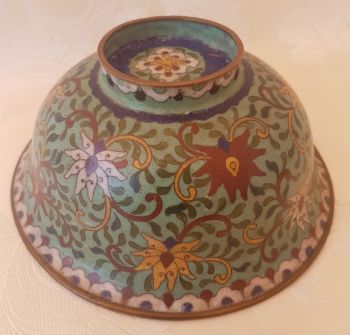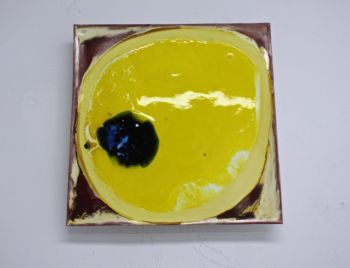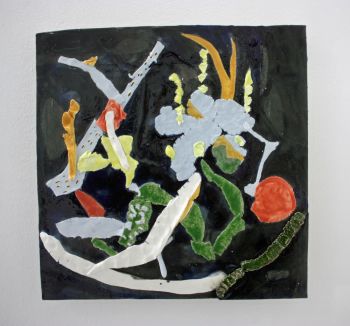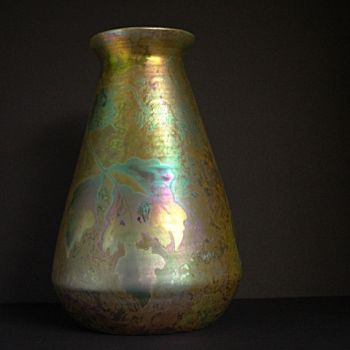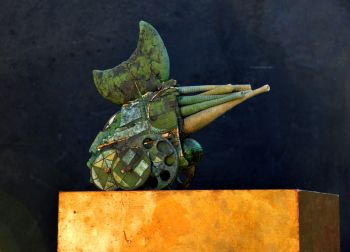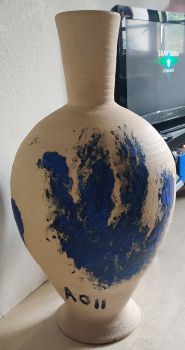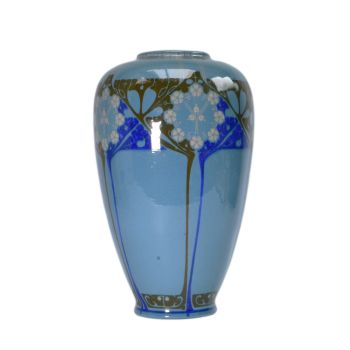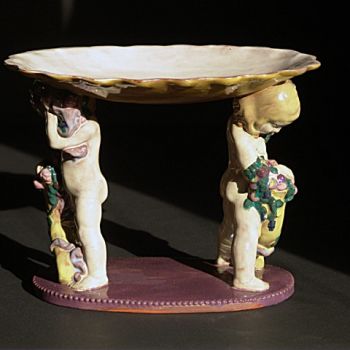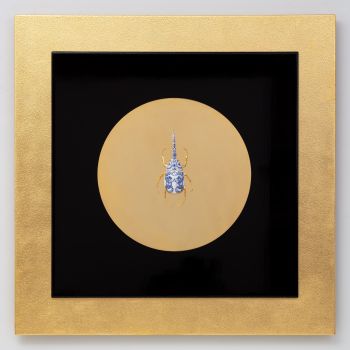Chinese porcelain monochrome turquoise crackled vase, Kangxi period (1661-1722), Qing Dynasty 1661 - 1722
Artista Desconhecido
PorcelanaPorcelana chinesa
13.50 cm, ø 7 cm
ConditionVery good
Preço em pedido
Menken Works of Art
- Sobre arteA Chinese porcelain monochrome turquoise vase.
China, Kangxi period (1661-1722).
The vase of baluster form with a rounded belly, the elongated cylindrical neck with a flaring rim, covered in an attractive crackled turquoise glaze, stopping just above the footrim
About turquoise glaze:
Turquoise glaze owes its color to copper oxide in an alkaline glaze mixture. It has a long history in Chinese ceramics, dating back at least to the Tang dynasty. Interest in turquoise glaze was also present among Middle Eastern potters, though their methods to achieve similar results differed. The technology varied depending on the material the glaze was applied to.
One of the curiosities of the Chinese potters' techniques was their use of saltpeter, a soluble material, often unfitted. The saltpeter was mixed with quartz and water (and sometimes with lead oxides or carbonates) to create low-temperature glazes.
After analyzing a late 19th-century raw turquoise glaze used at Jingdezhen, the renowned French ceramic chemist Georges Vogt wrote in 1900:
'The simplicity with which the Chinese prepare this turquoise ... is truly remarkable. Nothing in its composition needs to be melted, or to be fitted. The only preparation needed is to grind together the saltpeter, the quartz and the copper powder in suitable proportions and it is ready to be used on porcelain vases.'
Ref:
A vase of similar shape is in the Metropolitan Museum of Art collection, accession number: 79.2.93
Dimensions:
Height 13.5 cm, diameter 7 cm.
Condition:
A small chip to the foot rim, furthermore in perfect condition.
Inv. No: MW66 - Sobre artista
Pode acontecer que um artista ou criador seja desconhecido.
Algumas obras não devem ser determinadas por quem são feitas ou são feitas por (um grupo de) artesãos. Exemplos são estátuas dos tempos antigos, móveis, espelhos ou assinaturas que não são claras ou legíveis, mas também algumas obras não são assinadas.
Além disso, você pode encontrar a seguinte descrição:
•"Atribuído a …." Na opinião deles, provavelmente uma obra do artista, pelo menos em parte
• “Estúdio de…” ou “Oficina de” Em sua opinião um trabalho executado no estúdio ou oficina do artista, possivelmente sob sua supervisão
• "Círculo de ..." Na opinião deles, uma obra da época do artista mostrando sua influência, intimamente associada ao artista, mas não necessariamente seu aluno
•“Estilo de…” ou “Seguidor de…” Na opinião deles, um trabalho executado no estilo do artista, mas não necessariamente por um aluno; pode ser contemporâneo ou quase contemporâneo
• "Maneira de ..." Na opinião deles, uma obra no estilo do artista, mas de data posterior
•"Depois …." Na opinião deles uma cópia (de qualquer data) de uma obra do artista
• “Assinado…”, “Datado…” ou “Inscrito” Na opinião deles, a obra foi assinada/datada/inscrita pelo artista. A adição de um ponto de interrogação indica um elemento de dúvida
• "Com assinatura ….”, “Com data ….”, “Com inscrição ….” ou “Tem assinatura/data/inscrição” na opinião deles a assinatura/data/inscrição foi adicionada por outra pessoa que não o artista
Você está interessado em comprar esta obra de arte?
Artwork details
Related artworks
Artista Desconhecido
Set Franse Empire Pendules / Empire Lectura penduleearly 19th
Preço em pedidoKuipers Kunst & Antiek
1 - 4 / 12- 1 - 4 / 24
Artista Desconhecido
Series of 6 Chinese cups and saucers (Yongzheng period)1722 - 1735
Preço em pedidoKuipers Kunst & Antiek
Samuel Dejong
Anatomia Blue Heritage, Atlas Closed2017 - 2019
Preço em pedidoVilla del Arte Galleries
1 - 4 / 24Artista Desconhecido
Chinese gilt bronze censer, Xuande mark, 18th century, Qing dynasty18th century
Preço em pedidoMenken Works of Art
1 - 4 / 12











